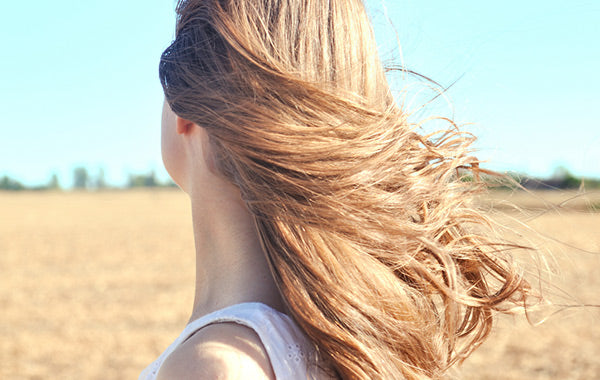There are lots of things to think about when it comes to haircare - finding the right shampoo and conditioner, washing, drying and maintaining for top condition, and discovering the styles you love that don't take all day to create. All those things have much to do with your hair type.
We've picked some care tips for a few common hair types that we hope you'll find really helpful. And if you have some haircare advice, do leave us a comment!
Fine hair
While you don't need to wash hair every day with any hair type, fine hair may be washed more often than other kinds. That's because thinner strands tend to get greasy more quickly, which can result in it feeling limp and heavy.
Most brands offer a volumising shampoo and conditioner, designed to give fine hair the appearance of more body. Ecostore's volumising haircare is made from plant based ingredients, has no parabens, and is designed to prevent hair breakage, giving it body and shine.
When it comes to cuts and styles, layers, shorters do's and darker colours (there are many dye options that don't include ammonia, parabens or sulphates) are often recommended for fine hair. All these can contribute to the appearance of volume.
And because thinner hair lacks strength, it's more prone to breakage. This can be avoided by sticking to brushing when it's fully dry, and avoiding really hot air drying or strenuous towel drying.
Curly hair
Curly hair - from rolling waves to tight frizz - has an entirely different set of demands! One of the most important things to know is while roots can be oily because they're near the scalp, the curl can be dry, particularly in the middle and at the end. So washing with shampoo too frequently or using a hot setting on a hairdryer can make this dryness worse.
Using your hairdryer at a cooler temperature or allowing your hair to dry naturally can be a better option. Attaching a diffuser to a hairdryer could also help to deflect too much direct heat. Like fine hair, curls can be prone to breakage if brushed too strongly or too regularly. A common recommendation is a wide tooth comb or using your fingers to undo tangles.
Using moisturising haircare also helps combat dryness - and when it comes to conditioner, some suggest zeroing in on the lower part of the hair first, where it may by driest, then working your way to the top.
Long hair
The great thing about long hair is its versatility when it comes to styling, but it also comes with some tricky issues. One of these is wear and tear from things that might not affect short hair. Those include friction from hair ends rubbing against the office chair, the sofa, clothing (particularly textured materials like wool), or damage from sun, rain and wind to the hair that extends beyond the shadow of a wide brimmed hat.
Even leaving hair loose at night can cause damage over time from rubbing on bedding, so some suggest tying it up overnight. When considering daytime styles, some people with long hair avoid tightly tied ponytails or buns that result in hair breaking when the tie is removed.
Split ends are a more common problem with long hair, so it may need trimming more often. And like hair of any type, it's most fragile when it's wet, so this isn't an ideal time to be brushing or combing it, or tying it up into a style.
Care for any type
We didn't think this article would be complete without a couple of nuggets to take away, no matter what your hair type is.
Choose gentler, plant-based haircare that doesn't strip the protective oils your scalp naturally produces. You can find out more about ecostore's shampoos and conditioners here.
Eat for healthy hair, because it's as much about what you put into your body as what you put on your hair. Try boosting your levels of food with essential fatty acids by eating fish like salmon and tuna, along with nuts and seeds. Dark leafy greens, with iron and vitamin C, along with protein-rich lean meats may also help.
Read more

You might come from a family that practiced sustainability each day, or maybe you discovered green habits for yourself during adulthood. But how do you pass those practices and habits on to your ow...

Parenting to sleep is part of your life long journey as parents, and people like myself are here to support and guide you through how you want to parent. The best bit of advice I have before you re...







